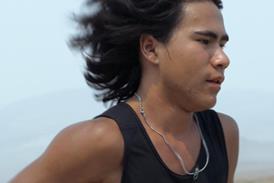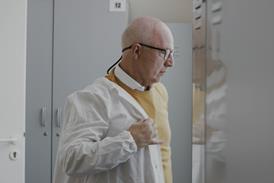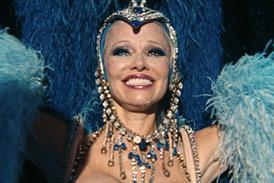Dir. Julien Temple. UK. 2005. 135 min.
A tribute to the legendary UK pop musicfestival, Glastonbury achieves a state ofgrace rare in performance documentaries; you begin to feel you're in attendanceat this three-day marathon of music, mood-altering substances and mayhem. At135 minutes, it's a concert film that will test the endurance of anyone notfully committed to the concept of watching music history unfold in real-time.Glastonbury's lesser profile in North America will limit the film's appeal therebut legions of pop music fans, not to mention the hundreds of thousands whohave attended the event over its 35 years, are sure to make this a specializedhit in urban markets. DVD, presuming the music rights are cleared, will behuge.
The film, which premiered at Sundance inthe World Documentary Competition and screens at Berlin, features performancesby the premiere pop performers of the last three decades from veterans likePaul McCartney, David Bowie and Van Morrison to the more recent Coldplay, Oasis,Bjork and Primal Scream.
For director Julien Temple, the film is acareer-topping achievement and an atonement of sorts for his ironic and deeplycynical 1980 feature debut The Great Rock 'n' Roll Swindle, a documentary about The Sex Pistols that was as much about theband as it was about the sham nature of punk rock. Glastonbury is refreshingly objective in its portrayal of people who pretty muchjust want to have a good time. At times the film seems like Clan of The CaveBear, with its mud-splattered youths zombied by 72sleepless hours.
Temple and his researchers have combedthrough 1,500 hours of archival footage - amateur and professional, includingmaterial shot by Nicolas Roeg of the 1971 event - shot over the 35 years tocreate a unity, a single Super Glastonbury without reference to dates. The onlysignals are the shifting grain of the footage and the sine waves of fashion,flared trousers through skinny trousers back to flared.
The one constant is festival-founderMichael Eavis, the west England farmer who opened the grounds of his 150-acrefarm in 1970 for something to do. The next year the festival grew to 12,500attendees; by 2005 hundreds of acts across all artforms were watched by150,000-plus attendees - paying £125 per ticket
The production, launched in 2002, wasspurred by Eavis' concern that the event, which has drawn its share ofcontroversy over the years, might not be allowed to continue and thus needed tobe committed to cinema for posterity. He needn't have concerned himself. Thecameras have been rolling at Glastonbury since the beginning, capturing itsdistinctly British eccentricities and eccentrics. Eavis ages chronologicallybut never loses his youthful enthusiasm for the show
This isn't just a journey backstage butliterally into the bowels of the festival infrastructure; the wretched state ofthe portable toilets becomes a running joke capped by a sequence with the threelocal gents whose job it is to pump out the sewage and dump it into the farm'streatment tank. Another ongoing concern over the festival's history has beenfence-hoppers avoiding the admittance fee and putting a strain on thefestival's resources, including the toilets. Also documented is Eavis' effortsin perfecting a perimeter fence capable of repelling these freeloaders.
There's no doubt the event is tamer thanits early days, a reflection of the aging revelers
Production companies
Newhouse Nitrate, BBC Films, Hanway Films, EMAP Performance
UK distribution
Pathe Distribution
International sales
Hanway Films
Producer
Robert Richards
Cinematography
Julien Temple




















No comments yet